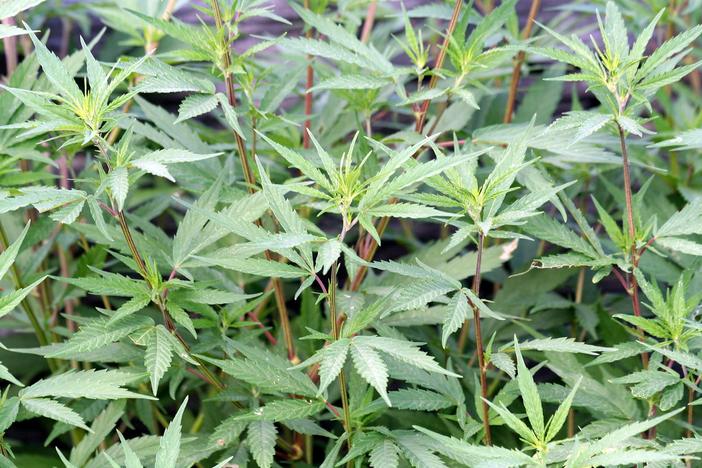Marijuana
(Cannabis sativa)
Marijuana (Cannabis sativa)
/
/

manuel m. v.
CC BY 2.0
Image By:
manuel m. v.
Recorded By:
Copyright:
CC BY 2.0
Copyright Notice:
Photo by: manuel m. v. | License Type: CC BY 2.0 | License URL: https://creativecommons.org/licenses/by/2.0/ | Uploader: M. Martin Vicente | Publisher: Flickr













































































Estimated Native Range
Summary
Cannabis sativa, commonly known as Marijuana, is an annual herbaceous flowering plant originally native to steppe and grassland regions of Central Asia. The plant exhibits sexual dimorphism, with unisexual flowers that lead to individual plants being predominantly male or female. Cannabis sativa is a short-day plant, requiring a specific light cycle to initiate flowering, typically when the plant experiences at least 12 hours of darkness per day. The flowering period varies from seven to fifteen weeks, influenced by environmental conditions and genetic strain.
Cannabis sativa is valued for its multipurpose uses, including industrial fiber, seed oil, food, and medicinal applications. Its psychoactive compounds, particularly in the flowers and fruits, are sought after for recreational and spiritual use. The plant’s adaptability to hydroponic cultivation is notable, as it thrives in a pH range that deters many pathogens. In terms of appearance, Sativa plants have slender, finger-like leaves and can grow significantly taller than their Indica counterparts, making them less suitable for discreet cultivation. In outdoor settings, they prefer full sun and moderate water, with a preference for well-drained soils. While it is not typically grown for ornamental purposes, its rapid growth and ease of cultivation make it a candidate for agricultural and research applications. However, it is potentially invasive outside its native range and is subject to legal restrictions in many regions due to its psychoactive properties.CC BY-SA 4.0
Cannabis sativa is valued for its multipurpose uses, including industrial fiber, seed oil, food, and medicinal applications. Its psychoactive compounds, particularly in the flowers and fruits, are sought after for recreational and spiritual use. The plant’s adaptability to hydroponic cultivation is notable, as it thrives in a pH range that deters many pathogens. In terms of appearance, Sativa plants have slender, finger-like leaves and can grow significantly taller than their Indica counterparts, making them less suitable for discreet cultivation. In outdoor settings, they prefer full sun and moderate water, with a preference for well-drained soils. While it is not typically grown for ornamental purposes, its rapid growth and ease of cultivation make it a candidate for agricultural and research applications. However, it is potentially invasive outside its native range and is subject to legal restrictions in many regions due to its psychoactive properties.CC BY-SA 4.0
Plant Description
- Plant Type: Herb
- Height: 3-12 feet
- Width: 2-2.6 feet
- Growth Rate: Rapid
- Flower Color: N/A
- Flowering Season: Fall
- Leaf Retention:
Growth Requirements
- Sun: Full Sun
- Water: Medium
- Drainage: Medium
Common Uses
Bird Garden, Edible*Disclaimer: Easyscape's listed plant edibility is for informational use. Always verify the safety and proper identification of any plant before consumption.
Natural Habitat
Originally native to steppe and grassland regions of Central Asia
Other Names
Common Names: Mary Jane, Grass, Hashish, Hemp, Pot, Cuban Crab Grass, Devil’s Lettuce, Sticky Icky, Cheeba, Ganja
Scientific Names: , Cannabis sativa, Cannabis americana, Cannabis sativa var. sativa, Cannabis sativa var. indica, Polygonum viridiflorum, Cannabis gigantea, Cannabis sativa f. pedemontana, Cannabis sativa var. gigantea, Cannabis sativa var. monoica
GBIF Accepted Name: Cannabis sativa L.